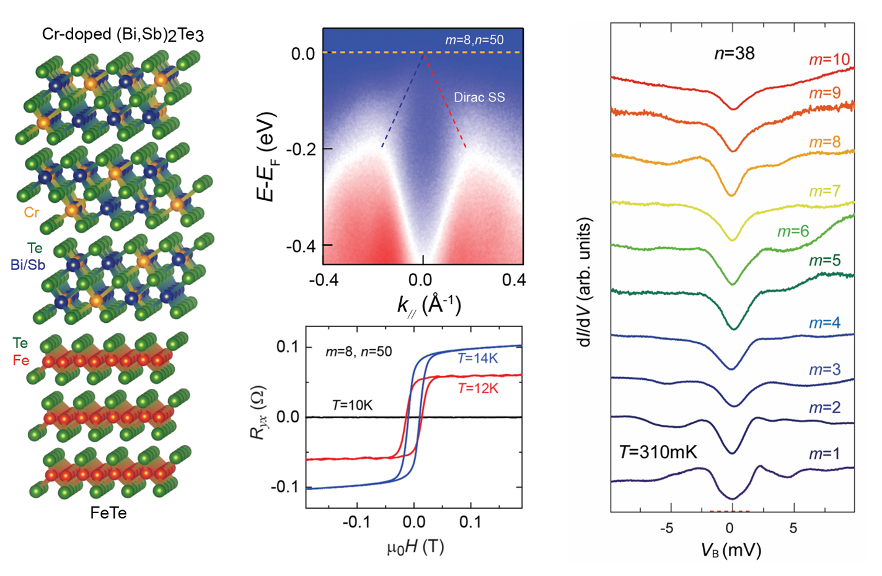 An IRG1 team employed molecular beam epitaxy to synthesize heterostructures stacking a ferromagnetic topological insulator with a quantum anomalous Hall state, Cr-doped (Bi, Sb)2Te3, and an antiferromagnetic iron chalcogenide, FeTe, with an atomically sharp interface. An unexpected phenomenon emerges: interface-induced superconductivity.
An IRG1 team employed molecular beam epitaxy to synthesize heterostructures stacking a ferromagnetic topological insulator with a quantum anomalous Hall state, Cr-doped (Bi, Sb)2Te3, and an antiferromagnetic iron chalcogenide, FeTe, with an atomically sharp interface. An unexpected phenomenon emerges: interface-induced superconductivity.
Electrical transport, reflective magnetic circular dichroism, magnetic force microscopy, and angle-resolved photoemission spectroscopy demonstrate the coexistence of superconductivity, ferromagnetism, and topological band structure.
These QAH/FeTe heterostructures with robust interface-induced superconductivity provide an ideal platform for the exploration of chiral topological superconductivity and Majorana physics and thus constitute an important step toward scalable topological quantum computation.